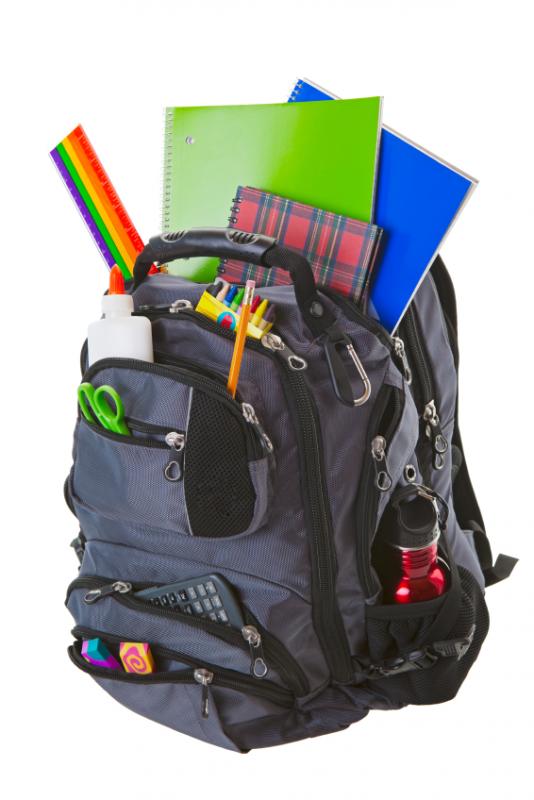With nearly 80% of people suffering from back pain at some point in their lives, children need to be aware of their spine and develop good habits from a young age!
A key factor to preventing spine or back pain is staying healthy. Overall wellness is a combination of a balanced diet, appropriate exercise and physical activity, restful sleep and positive lifestyle choices.

Here are a few simple tips for parents to help their children develop healthy spine habits which will aid in preventing back pain from developing as children get older.
Wearing the right backpack
- Choose the right one Look for a backpack with padded straps. While your child might beg for a messenger-style bagbecause it's what all the "cool kids" are using, avoid any style that has only one strap that crosses the chest. Using a backpack with one strap puts all the pressure on one shoulder instead of evenly distributing it across two. Also, try to choose a backpack that is lightweight and made of canvas, not leather. Another good option is a backpack with a waist belt, which helps to distribute the weight more evenly across the body.
- Wearing a backpack: there's a right way and a wrong way. Most kids let their bag hang way too low or slung over one shoulder, but with the ever-increasing book loads, this places extra strain on the spine and shoulders. Tighten the straps enough for the backpack to fit closely to the body. The pack should rest evenly in the middle of the back and not sag down to the buttocks.
- Pack wisely! Speak to your child about making sure they are only carrying items in their backpack that they need that day. Clean out the pack regularly, so your child doesn't end up carrying extra weight. Use all of the backpack's compartments, putting heavier items, such as textbooks, closest to the center of the back. Walking around with a heavy backpack can also affect a child's posture. The backpack should not weigh more than 15% of the child's body weight; they should still be able to walk and stand in correct posture, without leaning forward to compensate for the added weight.
Proper posture a must
Proper posture is something that sounds basic, but does not come easily to most people.
- Teach correct posture. Good posture while standing is a straight back, squared shoulders, chin up, chest out, stomach in. If you can draw a straight line from your ear lobe through your shoulder, hip, knee, to the middle of your ankle, then you are in good posture.
- Proper posture throughout the day, but especially while:
- Sitting in class: Kids need to make sure that both their feet are planted on the ground, and that their backs are straight. Rounding the spine, or slouching, is a common problem and increases the stress on the spine, leading to back pain.
- Texting/playing games on a tablet: When we text, or look at a screen on out laps, we are looking down, and causing a tremendous amount of stress on our spine. Instead of looking down, teach your child to raise the phone or tablet to eye level. With so much time spent looking at mobile devices, the strain over time can cause serious damage.
Physical activity key
- Staying active helps children maintain a healthy weight, putting less stress on the spine
- Staying active helps build muscles, which are important for supporting the spine. A strong core is necessary to hold the spine upright.
- Sitting in class for long periods can cause back pain, so suggest to your child that, between classes, they use simple stretching and strengthening exercises. Some fun and quick ones include the Double Arm Doorway Stretch. Stand in a doorway and brace your hands on each side of the frame. Keeping your hands and arms at shoulder level, engage your stomach muscles and straighten your back. Now take one step forward and lean your upper body forward so you feel a stretch inside your chest and shoulder muscles.

Kenneth K. Hansraj, M.D. is a spinal and orthopedic surgeon specializing in cervical, thoracic and lumbar procedures, bloodless spine surgery, minimally invasive spine surgery, laminectomies and spinal fusions. He believes in whole body wellness, preventative care and that the spine is a principal indicator of general health impacted by "human software and hardware." Dr. Ken is the author of the internationally bestselling book, "Keys to an Amazing Life: Secrets of the Cervical Spine" (January, 2013) and of "Bloodless Spine Surgery: Pictures and Explanations." His goal with each of his books is to bring years of accumulated expert medical knowledge to the public at-large in an easy-to digest format and to help countless individuals with ongoing spinal and health issues.








